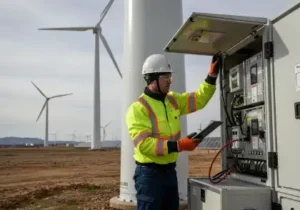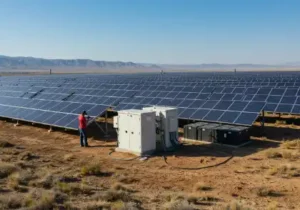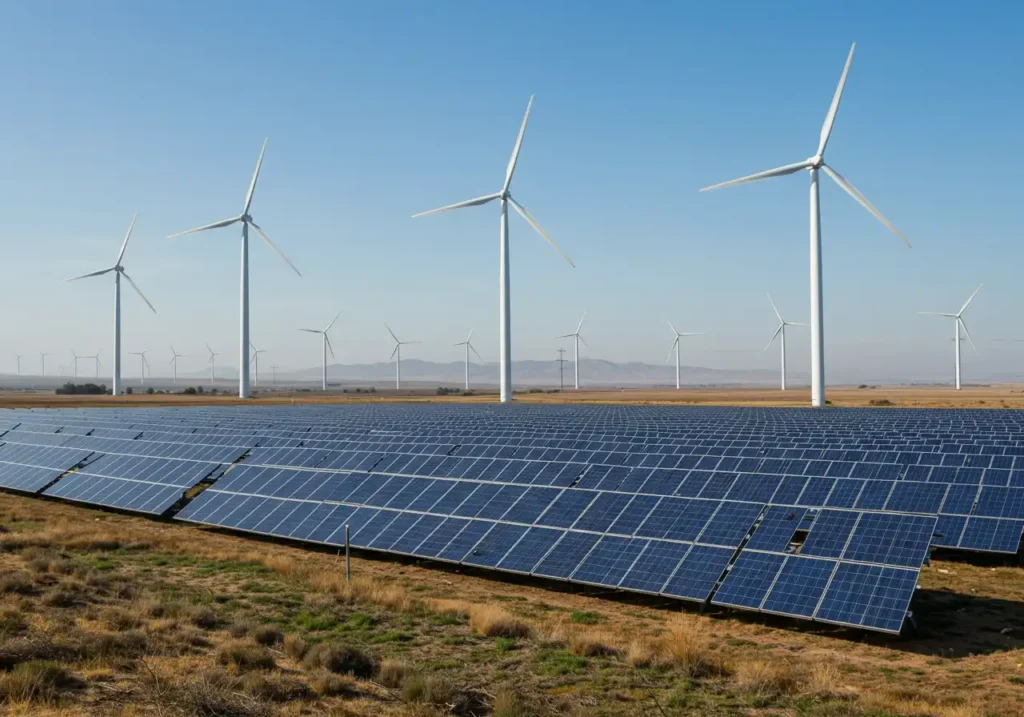Introduction
In July 2025, California made history by generating two-thirds of its electricity from renewable sources. This milestone is the result of years of investment in clean technologies, progressive policy-making, and statewide commitment to environmental stewardship. It demonstrates that large-scale transitions to sustainable energy are not only possible but also beneficial to both the economy and the environment.
Breaking Down the Numbers
 According to the California Energy Commission, 66% of the state’s electricity in mid-2025 came from renewable sources such as solar, wind, geothermal, and small hydroelectric facilities. This is a dramatic increase from just a decade ago, when renewables accounted for less than 30% of California’s energy mix.
According to the California Energy Commission, 66% of the state’s electricity in mid-2025 came from renewable sources such as solar, wind, geothermal, and small hydroelectric facilities. This is a dramatic increase from just a decade ago, when renewables accounted for less than 30% of California’s energy mix.
- Solar Power: 38% of total grid supply
- Wind Power: 18%
- Geothermal & Hydroelectric: 10%
These figures highlight California’s leadership in deploying clean energy infrastructure at scale.
The Road to 66% Clean Energy
This achievement didn’t happen overnight. Over the past decade, California has implemented aggressive renewable energy targets, such as Senate Bill 100, which set the goal of 100% clean electricity by 2045. Incentives for solar installation, wind farm development, and grid modernization have played key roles in meeting these targets ahead of schedule in certain sectors.
Partnerships between the public and private sectors have also accelerated progress. Utility companies, technology firms, and community organizations have collaborated to install large-scale renewable projects and integrate battery storage solutions.
Economic Benefits of the Clean Energy Boom
The transition to renewable energy has brought significant economic advantages to the state. The clean energy sector now supports over 500,000 jobs, ranging from engineers and technicians to construction crews and maintenance specialists. These jobs often offer higher wages and better long-term security compared to traditional fossil fuel roles.
Furthermore, renewable energy projects attract billions of dollars in investment annually, boosting local economies, particularly in rural areas where wind and solar farms are often located.
Environmental Impact
Beyond the economic gains, the environmental benefits of achieving a two-thirds clean energy grid are substantial. California’s greenhouse gas emissions from electricity generation have dropped by over 60% since 2010. The reduction in air pollutants has contributed to improved public health, particularly in urban areas that once suffered from high smog levels.
Wildlife also benefits from reduced environmental stress, as cleaner air and water help maintain healthier ecosystems across the state.
Technologies Driving the Transition
Several key technologies have made this milestone possible:

- Utility-Scale Solar Farms: Expansive solar arrays across the Central Valley and desert regions generate massive amounts of electricity during daylight hours.
- Offshore and Onshore Wind Farms: Harnessing steady winds along California’s coast and inland mountain passes.
- Advanced Battery Storage: Storing surplus renewable energy for use during peak demand or when the sun isn’t shining and the wind isn’t blowing.
- Smart Grid Technology: Optimizing energy distribution to prevent waste and balance supply with demand in real-time.
Challenges That Remain
While the progress is remarkable, California still faces challenges in reaching its ultimate goal of 100% clean energy. Energy storage capacity needs to expand significantly to ensure reliability during extreme weather events. Transmission infrastructure must also be upgraded to carry renewable energy from remote generation sites to population centers.
Additionally, policymakers must address equity concerns, ensuring that low-income communities have access to clean energy benefits without bearing disproportionate costs.
California as a Global Leader
California’s achievement serves as a model for other states and nations. The state’s ability to power two-thirds of its grid with clean energy proves that ambitious climate goals can be met with the right combination of political will, technological innovation, and public support.
Countries seeking to reduce their dependence on fossil fuels can look to California’s policies, incentives, and infrastructure investments as a blueprint for success.
Looking Ahead
With momentum on its side, California is well-positioned to accelerate its clean energy transition. Emerging technologies such as green hydrogen, offshore wind expansions, and next-generation battery storage could push the state toward its 100% clean electricity goal ahead of schedule.
As climate challenges grow more urgent, California’s leadership in renewable energy is more than just an environmental victory—it’s a pathway to a sustainable and prosperous future.
Conclusion
California’s milestone of powering two-thirds of its grid with clean energy marks a turning point in the fight against climate change. It demonstrates that large economies can rapidly decarbonize their power sectors while creating jobs, boosting local economies, and improving public health. The road ahead will require continued innovation and commitment, but if this achievement is any indication, California is more than ready to lead the way.

